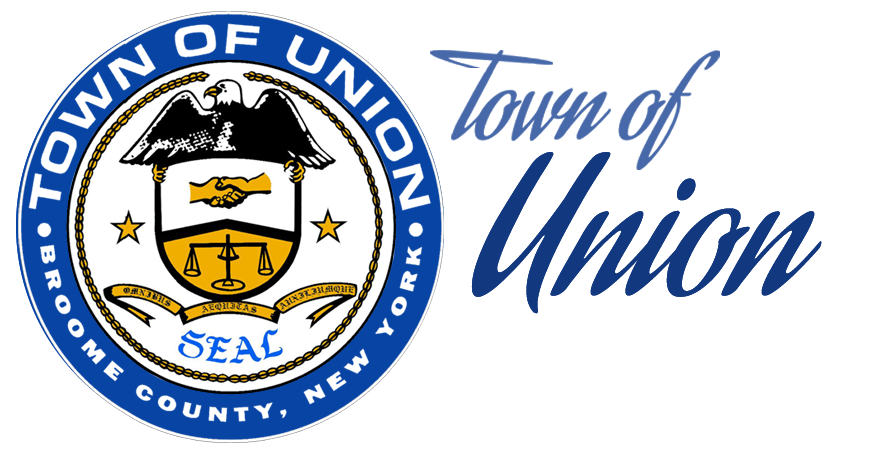Historian Contact Info
Suzanne M. Meredith
|
Jacqueline Tedesco
|
Office HoursMonday - Friday |
Town of Union included over 700 square miles in the glaciated Allegheny Plateau. Much of the land spread along the Susquehanna River Valley, a vale about nine miles long and averaging two miles in width. It is an area embraced by the presence of towering green foothills of the Catskill Mountain range. The population has teamed to appreciate the forests and meadows of the hills, often building homes and farms on the rock strewn inclines. The original land patent was obtained by General Oringle Stoddard, who came from Massachusetts in 1785 as a commissioner for the Boston Company to bargain with the Native Americans for land. An enormous tract, 2,300,000 acres, changed hands, and became known as the Boston Purchase. The price agreed to was twelve and one half cents per acre.
Half of this amount was to be paid in cash, and the rest in trade goods. Land was apportioned to the 60 investors according to the amount each individual had contributed to the corporation. Union was formed on February 16, 1791, as part of the County of Tioga, by an act of the New York State Legislature, and later became one of the original towns of Broome County. The vicinity of Union was the homeland of the Iroquois for many generations until the 1780s when trappers, traders, and settlers from Europe began to carve pathways to the future. By 1791, there were 600 pioneer residents, and the native people began to disappear. Travel was mainly on the river, and over faint Native American trails along the banks.
The barter system prevailed in the fledgling economy, with hides, tallow, ashes, and grain accepted in place of cash, and shillings were used moreoften than dollars well into the 1800s. Eventually, commerce changed from farming, fishing, and lumbering to shops and factories, and on to technologically sophisticated empires. Early residents dreamed of one continuous city along the valley floor from Port Dickinson to the Tioga line. Although an amalgamation of municipalities has yet to evolve, the lives of the people flourish, and boundaries blur, as population and cultures entwine to create an exciting and diverse community-a Union, of spirit, fortitude, and faith in America.
The photographs presented in a current book of Union history are whispers from the past ... dating from approximately 1880 to the 1940s. The volume is available at the Amos Patterson Museum, or from the Town of Union Historian. Suzanne M. Meredith, Historian, Town of Union Your queries and participation in preserving our heritage is always welcome.
© Copyright
Town of Union. All Rights Reserved.
Website Design and Hosting by: Edmunds GovTech





